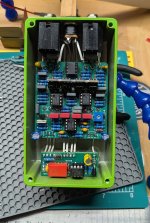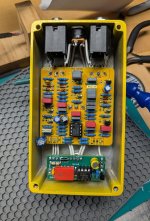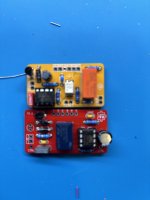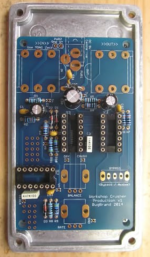From what I've seen, the main thing most Aion boards expect from the bypass breakout board is power that is polarity-protected and usually has some small filter cap (100nF or 470nF)... if you give up polarity protection and have a known good/low noise power supply, you could probably get away with taking power straight from the DC jack.
That said, on several of my bypass designs, I added a "power out" pad specifically for Aion builds. I've also made custom one-off versions of these designs for Aion PCBs that have actual effect circuit components on the breakout board.
Here's my Aion Tachyon, which has a relay bypass board that uses a microcontroller for relay control and footswitch awareness. I discussed
this bypass circuit here, and
here is the GitHub repo with the code. Another build that uses a variation of that circuit:
Aion Heliodor.
I have another bypass design that uses a Schmitt-input inverter (CD40106 or 74HC14) instead of a microcontroller for the logic. I made custom versions for my
Aion Amethyst and
Aion Andromeda Deluxe builds.
Here's a build I did with a non-custom inverter-based bypass scheme:
Aion Hexeract. Note the Hexeract does have
one circuit component - a single series resistor - on the breakout board. Rather than make a custom/one-off breakout PCB for this build, I just used a resistor instead of a wire for the bypass PCB to effect PCB connection. Here's another "stock" inverter-based bypass board for an Aion board:
Aion Emerald.
My third and most recent bypass is
a buffered, electrical bypass scheme. I don't think I've done an Aion build with this yet, but it should work, as just like the designs above, I have a "board power" solder pad, which is just the input power from the DC jack, after it's gone through reverse polarity protection and a little bit of filtering.





